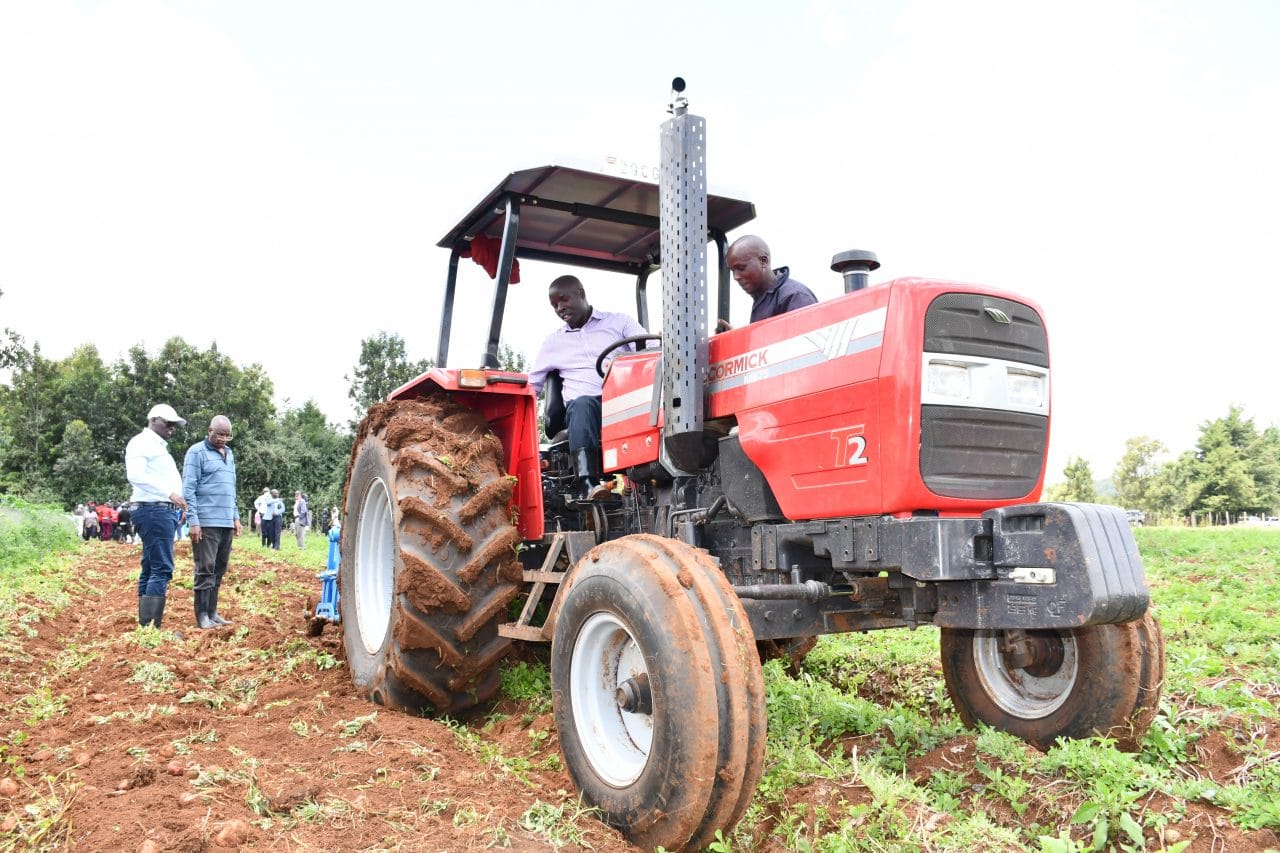Farmers should embrace machinery for better profits
Research and records show that farm mechanisation comes with a couple of advantages and benefits. They include the following:
Saving inputs
Mechanisation saves inputs such as seeds and fertilisers while reducing labour requirements, saving on time. Countries such as India that have embraced farm mechanisation have registered increased crop productivity.
Saving time and labour
Manual labour is both time-consuming and exhausting. A dairy farmer who uses milking machines will have any number of cows milked within a short time, and will also need to hire fewer workers, saving money. In the instance that there is a shortage of human or animal labour, machines can replace them. Again, human labour that would have been directed to farming can go into other economic activities.
It Leads to Commercial Agriculture
Mechanisation results in a shift from subsistence farming to commercial agriculture. This occurs mainly due to the need for more land and capital to be associated with a farmer for him/her to reap the full technological benefits. It could also lead the farmer’s expansion into international markets.
With the digital age upon us, it is important for Kenyan farmers to embrace agricultural mechanisation to enable them to compete on a global scale. They will also be able to increase their farm income, contributing to the country’s GDP.
Value addition, which is a money-making branch of agriculture that more farmers are venturing into, is mostly made possible by the use of machinery. Farmers should dissuade themselves of the notion that farm mechanisation is only possible on many acres of land or with more animals.
Important things to consider when mechanising
The types of tools or machinery you choose will depend on your farm budget, and farming methods, but below is a basic guide about the four main types of farming equipment that every farmer needs.
Soil Cultivation Machines:
Mechanisation for land preparation is higher and this may be because land preparation is labour-intensive and the high cost of labour. Some farmers either own such machinery or rent it. In soil preparation, ploughs, harrows, and other machines that will till your soil, come in handy. Durability and strength are key factors when picking a soil cultivation machine.
The kind of farming you will be doing also matters. No-till farms require a lot of work when it comes to preparing and cultivating the soil – you will require a different plough from the one you will use on a pro-till farm.
Most cultivation machines have adjustable features, which is very important. From one field to another, you can have varying soil types, not to mention different moisture levels and soil density depending on the time of the year you are ploughing.
Pick an attachment that can be easily adjusted to suit your farm so you can get maximum use from it.
Planting Machines:
In Kenya, most of the planting is done using human labour. If you decide to go the mechanised route, you will need a suitable planting machine or “seeder”. Different seeders have different mechanisms to get the seed into the soil, among them plates, belts, tubes, and spoons.
Some will be more effective with different seed types than others.
Beware when buying second-hand seeders, and check for wear inside the machine before buying. Some high-tech planters on the market will spray herbicides and water with the seed into the ground. Depending on your budget, you may be able to find machines that do both.
Weeding:
Weed control is labour-intensive and has relatively low levels of mechanisation. If poorly done, it can contribute to reduced crop yields.
Many farmers rely on manual weeding, which is more expensive than mechanized weed control.
However, machinery such as knapsacks, boom sprayers, and motor-blowers, used such tasks, is available for purchase or hire
Irrigation Machines:
Some may be familiar with water tanks driven around the field, spraying the crops. However, there are other methods of irrigation, from the cloth drip-feeding pipes of irrigation to drone and aerial irrigation techniques.
Though expensive, in areas where there is little access to fields, they can be a lifeline.
When it comes to irrigation, the most important thing to consider is field drainage. Consider where water will naturally drain. These areas might not need additional irrigation.
You may need to get machines that can dig ditches to reduce flooding on some parts of your farm. It’s better to hire these machines than buy them, as you won’t need to use them more than once or twice.
Harvesting Machines: Harvesting was for long manual, making it an expensive undertaking.
However, there are harvesting machines that make the job easier. The machinery used includes combine harvesters, which can be hired or owned.
Note that machinery that serves different crops may be good and cheaper, but it may be of lower quality.
The harvester needs to be in top-notch condition to ensure that harvesting happens safely and effectively.
If you are only harvesting once or twice a year (depending on your crop’s lifespan) it may be more efficient to hire a top-of-therange harvester than buy a cheap one to keep on your farm.
Transportation:
Transportation is crucial in Kenya and highly mechanised. The type of transportation used depends on the area and terrain. The machinery used in transportation for food crops has gone from ox/donkey carts to tractor-trailers and three-wheeler vehicles. For industrial and horticultural crops, wheelbarrows and motor vehicles are often used. The machinery could be owned and or hired.
Value Addition:
Value addition has been on a steady rise in Kenya. This operation uses simple to complex machines.
Machinery used for value addition includes chaff cutters to make silage, balers for hay, and shredders. In sub-sectors such as dairy, there is the use of equipment such as milk coolers.
Also Read: how-to-grow-dragon-fruit



